




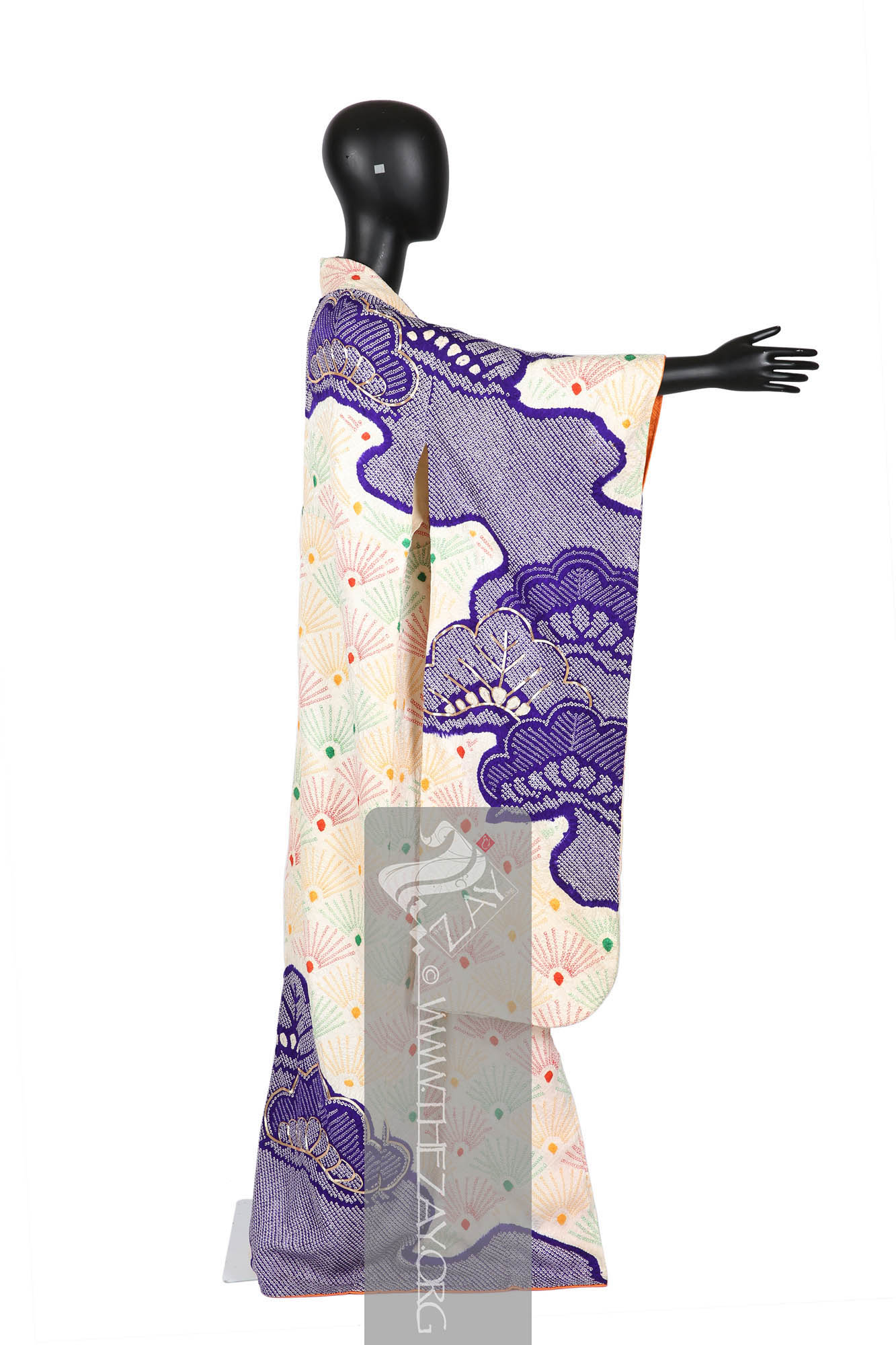
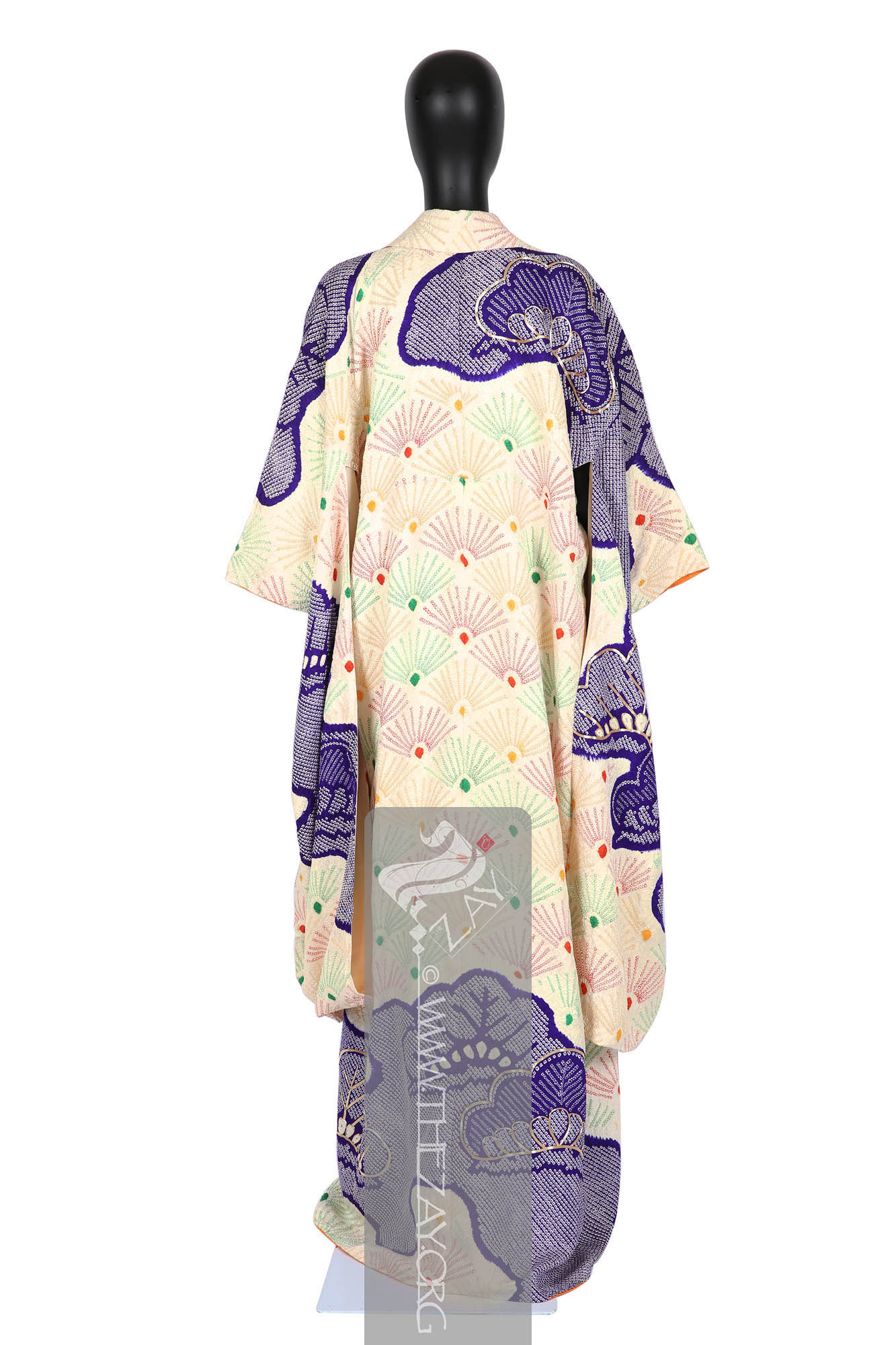
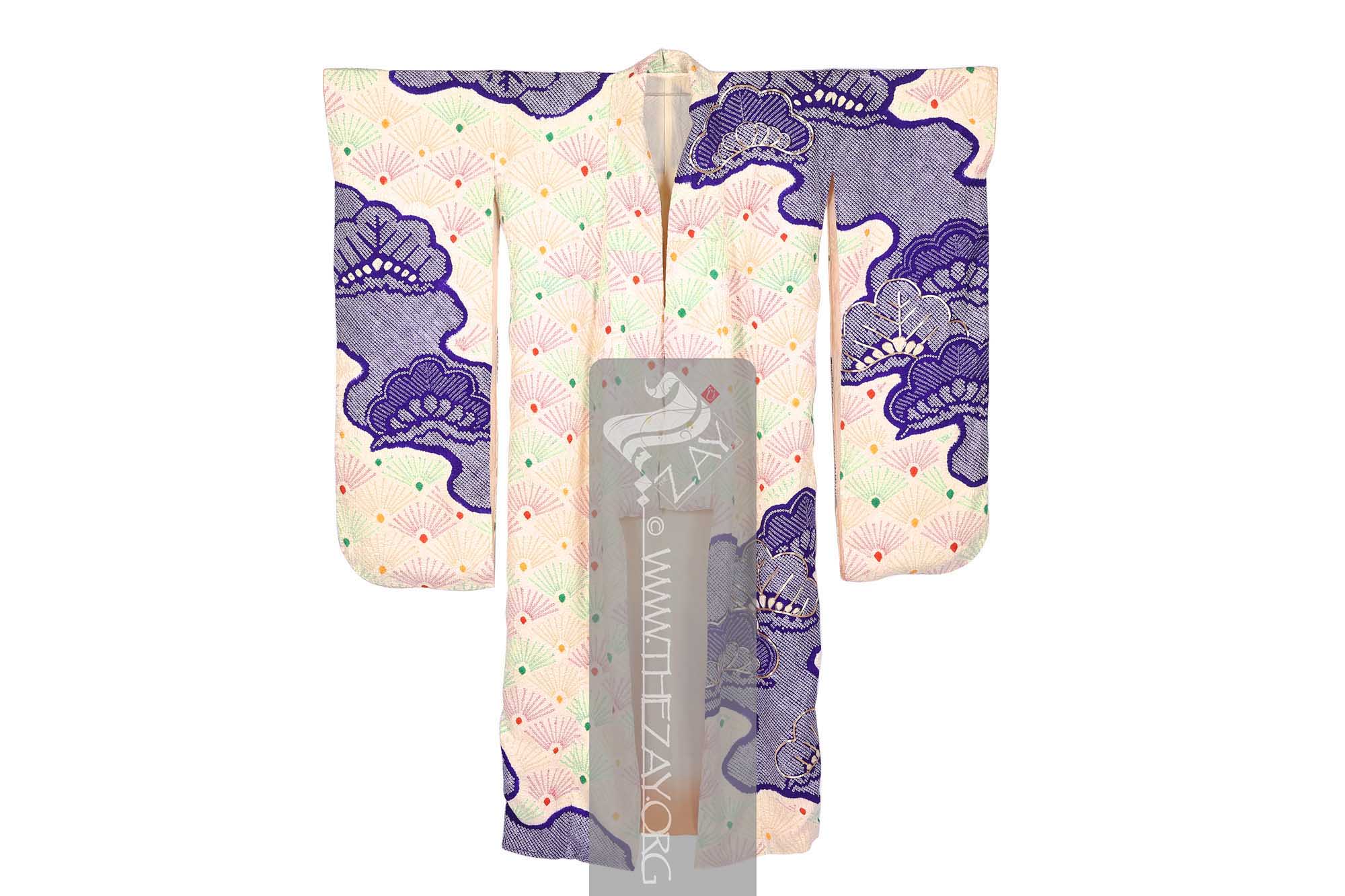
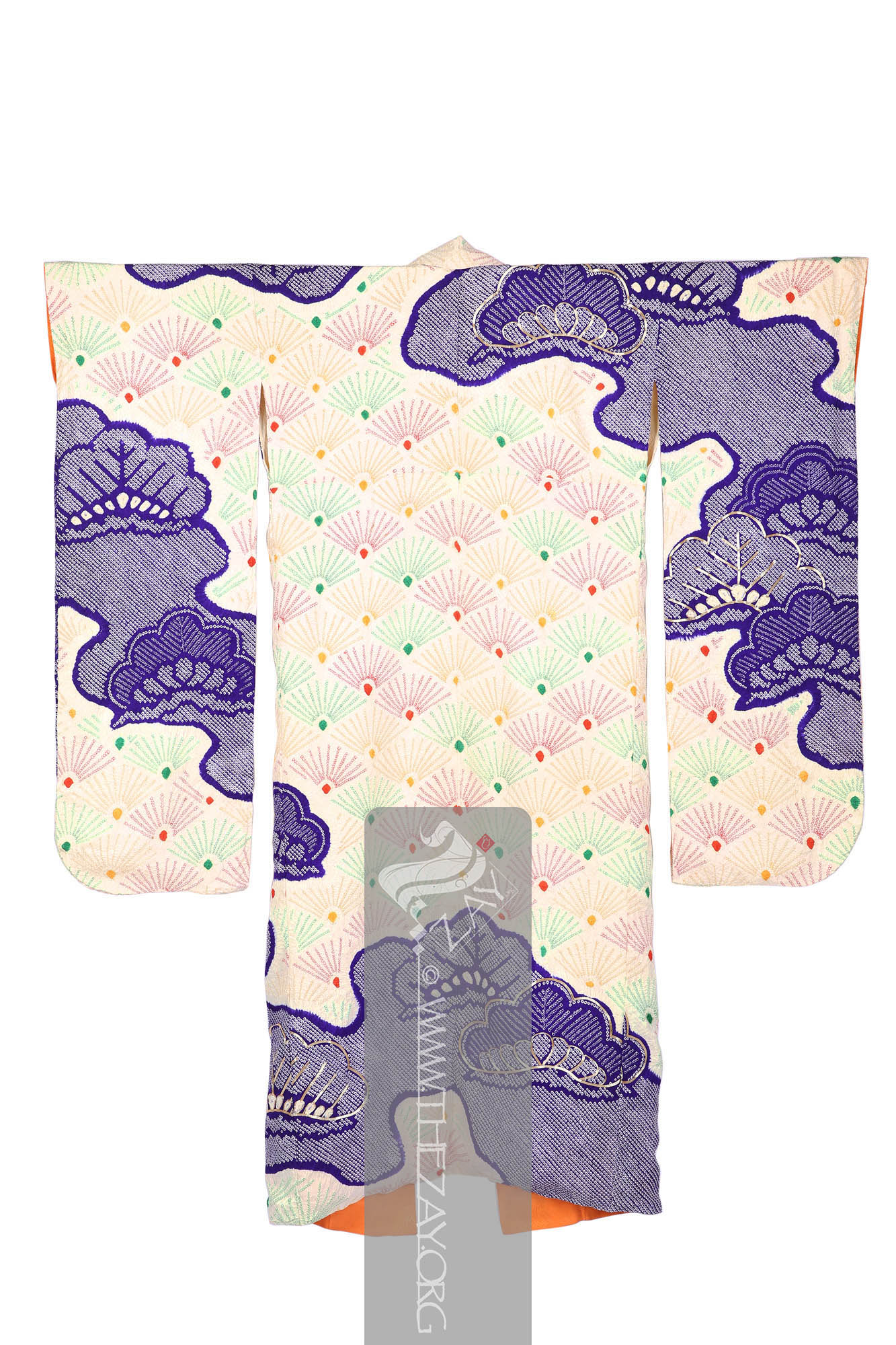
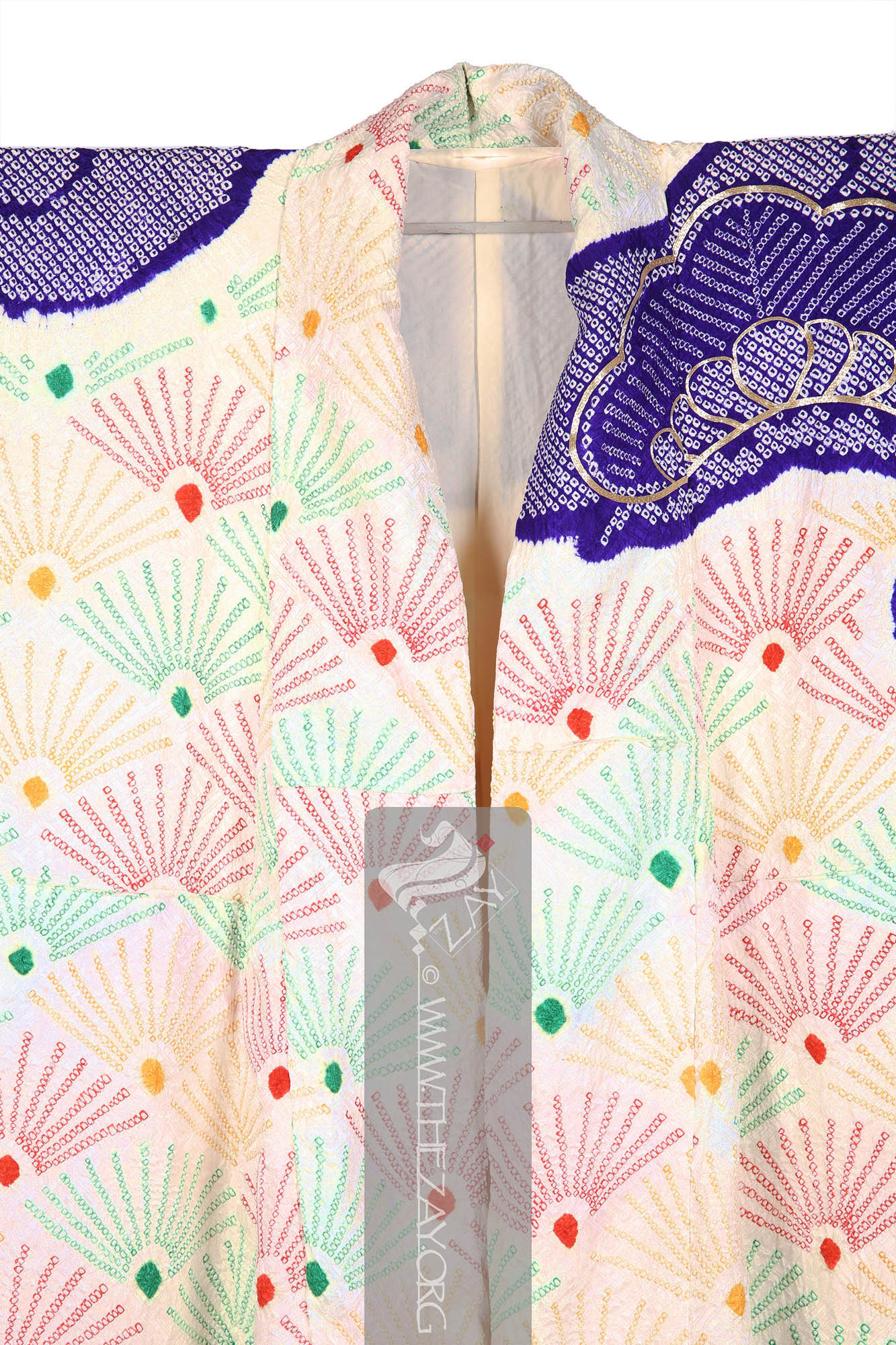
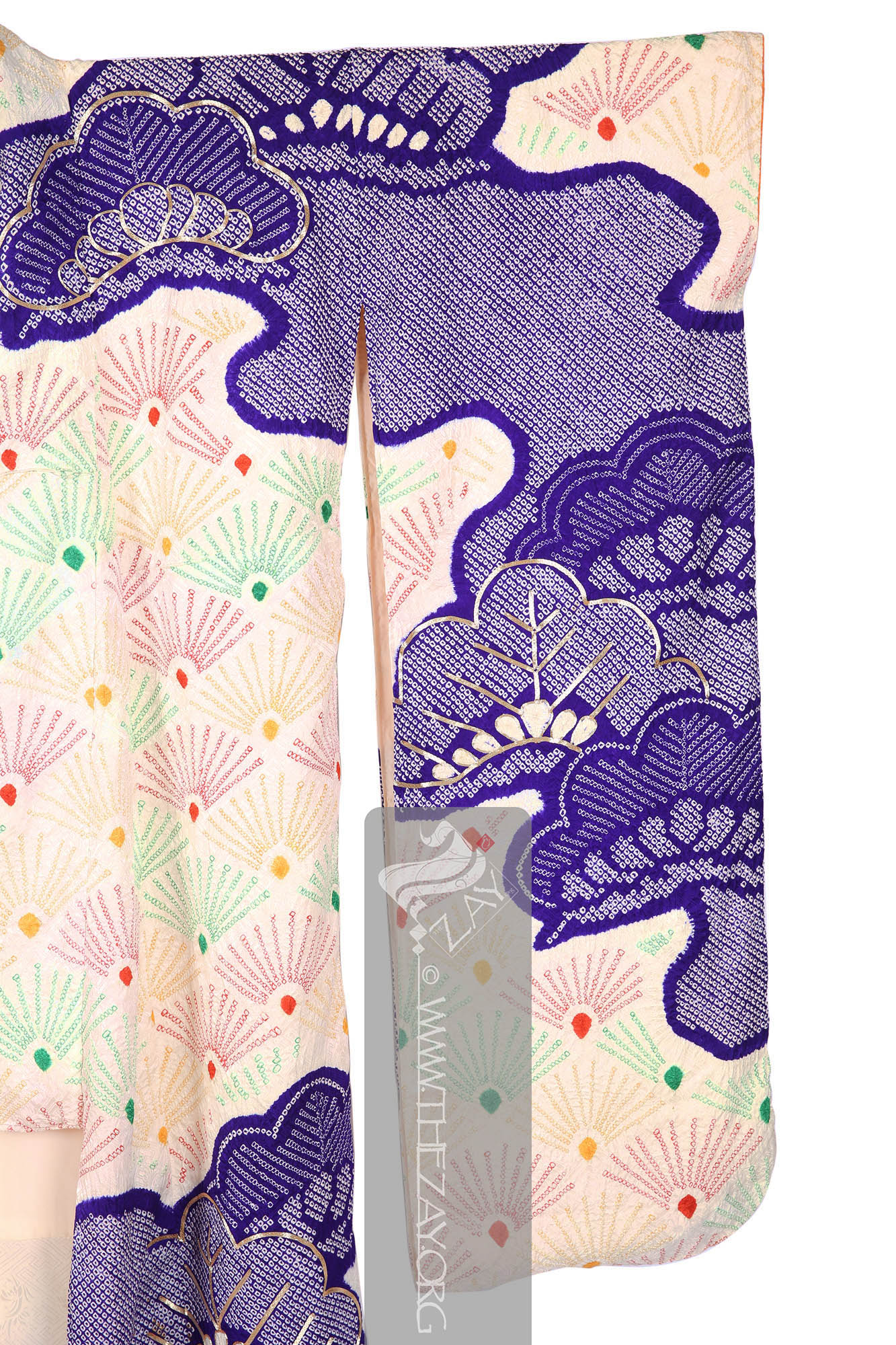
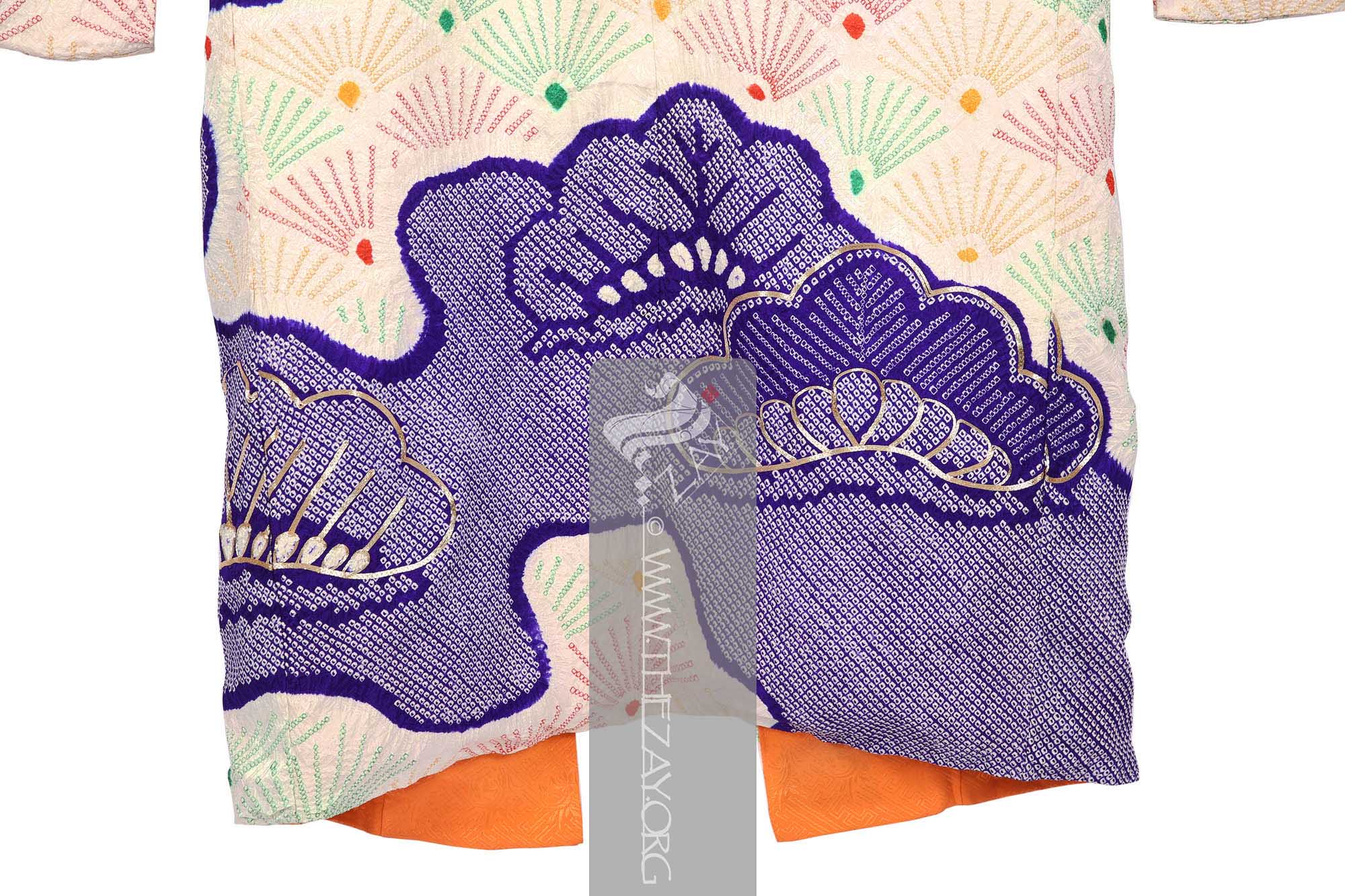
| Local Name | Furisode_kimono |
| Object Category | Overgarment |
| Gender | Female |
| Place Of orgin | Asia |
| Region | Japan |
| Object Range | Japan |
| Dimensions | Length: 158 cm Width: 128 cm |
| Materials | Silk |
| Technique | Dyed Hand Stitched Hand Embroidered |
| Motif | Floral Abstract |
| Provenance | Purchased, Ms Manami Tominaga, UAE 2017 |
| Location | The Zay Zay: (Arabic: costume, Pl. azyaā’), a set of clothes in a style typical of a particular country or historical period. Initiative |
| Status | In Storage |
| ZI number | ZI2017.500481 ASIA |
Crepe: (Latin: crispus; Old French: crespe – curled or frizzed), is a lightweight, crinkled fabric with a pebbled texture woven from a hand spun untreated or ‘in the gum’ silk yarn.
fabric traditionally made from silk. It has a distinctive pebbly texture and is commonly used in kimono Kimono: (Japanese: ki : wearing, mono: thing, Singular: Kimono) A traditional Japanese long loose robe with wide sleeves tied with a sash around the waist. Presently it is the national dress of Japan. and other traditional garments. Originally brought from China chirimen weaving extensively developed during the Edo period (1603-1868) and continues to be a popular textile in modern Japan. (furisode_kimono Furisode_kimono: (Japanese: Furisode – swinging sleeves), a type of kimono Kimono: (Japanese: ki : wearing, mono: thing, Singular: Kimono) A traditional Japanese long loose robe with wide sleeves tied with a sash around the waist. Presently it is the national dress of Japan. characterised by its long sleeves that can reach up to the ankles. Traditionally worn by only unmarried women for formal events. It often features a vibrant design that covers the entire fabric and is typically made of silk. ) in damask Dāmāsk: (Arabic: Damascus – a city in Syria), is a luxurious fabric woven with reversible patterns typically in silk, wool, linen, or cotton. Originating in China, the fabric was perhaps introduced to European traders at Damascus – a major trading post on the Silk Road with a thriving local silk industry. weave with wavy purple (shibori Shibori: (Japanese: Shiboru – To wring, squeeze, or press), is a Japanese technique of manual dyeing that involves manipulating fabric to create patterns by binding, twisting, folding, or compressing it before dyeing. The history of Shibori dates back to the 8th century and has been used in the creation of a variety of fabrics, including kimono and futon covers. ) dyed patterns. Like any furisode kimono Kimono: (Japanese: ki : wearing, mono: thing, Singular: Kimono) A traditional Japanese long loose robe with wide sleeves tied with a sash around the waist. Presently it is the national dress of Japan. , this piece has long sleeves.Couching: (Latin: collocare – Place together), in needlework and embroidery couching is a technique in which yarn or other materials are laid across the surface of the ground fabric and fastened in place with small stitches of the same or a different yarn
) embroidery, which is held by orange silk floss Floss: (Old French: flosche – nap of velvet), is a type of silk fibre obtained from the cocoons of wild silkworms. It is characterized by its long, fluffy fibers that are not tightly woven, making it ideal for use in various textile applications such as embroidery, lace-making, and sewing. threads.Crepe: (Latin: crispus; Old French: crespe – curled or frizzed), is a lightweight, crinkled fabric with a pebbled texture woven from a hand spun untreated or ‘in the gum’ silk yarn.
fabric traditionally made from silk. It has a distinctive pebbly texture and is commonly used in kimono Kimono: (Japanese: ki : wearing, mono: thing, Singular: Kimono) A traditional Japanese long loose robe with wide sleeves tied with a sash around the waist. Presently it is the national dress of Japan. and other traditional garments. Originally brought from China chirimen weaving extensively developed during the Edo period (1603-1868) and continues to be a popular textile in modern Japan. damask Dāmāsk: (Arabic: Damascus – a city in Syria), is a luxurious fabric woven with reversible patterns typically in silk, wool, linen, or cotton. Originating in China, the fabric was perhaps introduced to European traders at Damascus – a major trading post on the Silk Road with a thriving local silk industry. fabric as the kimono Kimono: (Japanese: ki : wearing, mono: thing, Singular: Kimono) A traditional Japanese long loose robe with wide sleeves tied with a sash around the waist. Presently it is the national dress of Japan. but without the shibori Shibori: (Japanese: Shiboru – To wring, squeeze, or press), is a Japanese technique of manual dyeing that involves manipulating fabric to create patterns by binding, twisting, folding, or compressing it before dyeing. The history of Shibori dates back to the 8th century and has been used in the creation of a variety of fabrics, including kimono and futon covers. . However, it is dyed in a gradient of orange and peach near the bottom of the fall.Couching: (Latin: collocare – Place together), in needlework and embroidery couching is a technique in which yarn or other materials are laid across the surface of the ground fabric and fastened in place with small stitches of the same or a different yarn
) and thread knotting techniques (macrame Macrame: makrəˌmā: (Arabic: karam: tree with dangling grapes), ornamental fringe. The art of knotting cord or string in patterns to make decorative articles. Earliest recorded uses of macramé-style knots as decoration appeared in Babylonian and Assyrian carvings.Macrame Macrame: makrəˌmā: (Arabic: karam: tree with dangling grapes), ornamental fringe. The art of knotting cord or string in patterns to make decorative articles. Earliest recorded uses of macramé-style knots as decoration appeared in Babylonian and Assyrian carvings.: (French: macramé – A hand-knotted textile from Turkish: makrama – table spread or towel, from Arabic: miqrama – bedspread possibly with knotted hanging fringes resembling dangling grapes or karam in Arabic) A form of textile or fringe made by a knotting cord in geometrical patterns possibly originating in Babylon and Assyria.), or flat metal adornment (talliTallī: (Turkish: tel – wire, string), Gulf Arab – a woven braided trimming made with metal wire, threads and ribbons often sewn on detachable panels used as embellishments. Other – (Synonym: tulle_bi_talli
Tūlle_bi_tallī: (French: Tulle – a city in France where fine material for veil was first made; Turkish: tel – wire; Synonym: tariq; talli; badla; khus_dozi ), series of small metal knots made on a woven net ground as embellishment. The term is commonly used in the North African Arab region specifically in Egypt.
Crepe: (Latin: crispus; Old French: crespe – curled or frizzed), is a lightweight, crinkled fabric with a pebbled texture woven from a hand spun untreated or ‘in the gum’ silk yarn.
-fabrics-chirimen chirimen: A Japanese crepeCrepe: (Latin: crispus; Old French: crespe – curled or frizzed), is a lightweight, crinkled fabric with a pebbled texture woven from a hand spun untreated or ‘in the gum’ silk yarn.
fabric traditionally made from silk. It has a distinctive pebbly texture and is commonly used in kimono Kimono: (Japanese: ki : wearing, mono: thing, Singular: Kimono) A traditional Japanese long loose robe with wide sleeves tied with a sash around the waist. Presently it is the national dress of Japan. and other traditional garments. Originally brought from China chirimen weaving extensively developed during the Edo period (1603-1868) and continues to be a popular textile in modern Japan. -kinsha